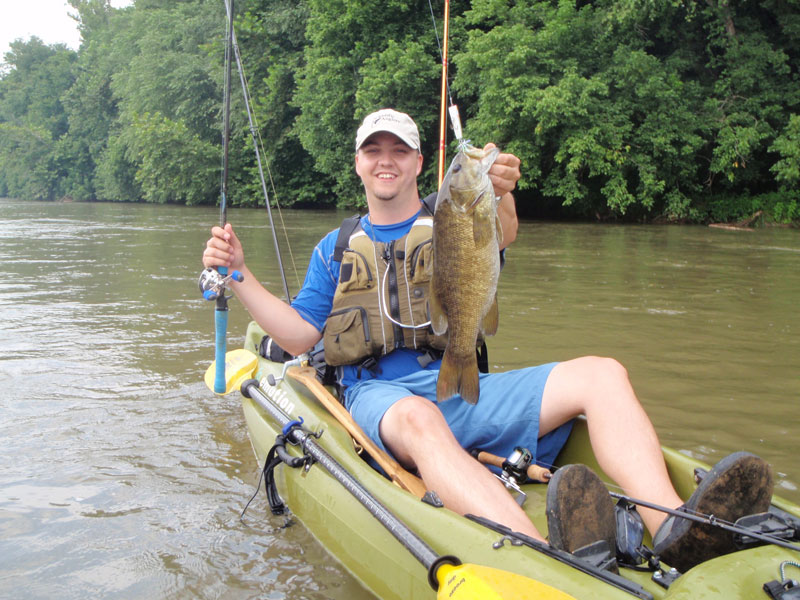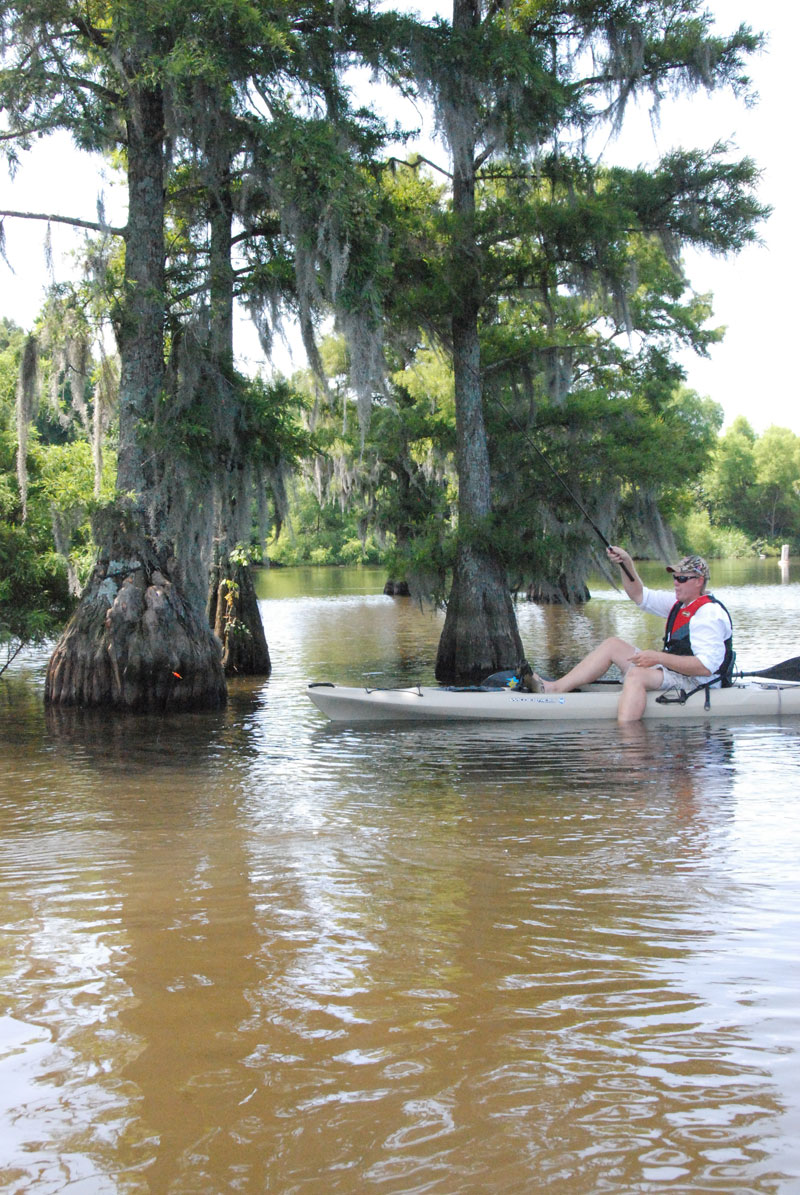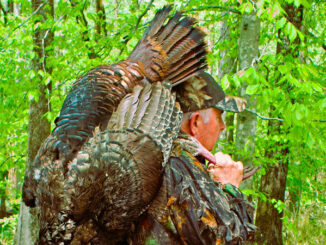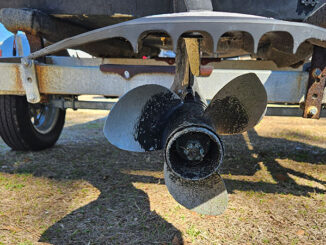
August and February are probably the hardest on kayak anglers when it comes time to load up the kayak and go fishing. In February, water temperatures are usually the lowest of the year, you have to wrap up in a bunch of layers to stay warm, and fish tend to be dormant because of the temperature extremes.
The same could be said of the month of August when water temperatures reach the highest peaks and like February, fish tend to be sluggish because of the hot water.
The good news is you can forget all the heavy clothing in August. And it’s very possible to find cooler water and willing fish if you know where to look. Here’s some ideas.
Rivers
Whether saltwater or fresh, moving water tends to be cooler than bodies of water that don’t see much movement. If you’re looking at what section of river to launch on, the old adage that rivers get deeper further downstream is one to pay attention to.
Find a stretch of river that has deeper water than the surrounding area, which will attract fish to concentrate in those areas.
Tailraces
Water exiting another body of water upstream often cools in one of two ways. If the exit is over the top of a dam, the fall aerates the water and will cool it significantly in the next few hundred yards. If the water exits from depth, as is the case from many hydro-electric dams, cooler water is being deposited into the tailrace and will be significantly cooler for up to a mile or more.
Deep Water
Deeper water is usually the ticket when surface temperatures are pushing the upper 80- to 90-degree mark. That doesn’t always mean you have to fish deep. But deeper water offers fish of all varieties a respite, making them more willing to move up in the water column when its time to feed or hold on the bottom if that’s where the food is.
Bridge Overpasses
Again a feature common around saltwater inlets and freshwater impoundments, bridges often cross deep enough water to attract fish. As a bonus, if the overpass is high enough and wide enough to get the boat under, the angler can fish all day in relative comfort while the overpass takes the brunt of the sun.
Offshore
For the saltwater kayak angler, fishing beyond the beach offers better fishing for migratory species who prefer the warmer water. Getting a kayak through the surf zone is an advanced skillset and should never be attempted alone. It’s better to find an inlet where the surf is easier to deal with although currents can be just as tricky to navigate.
———————————————————————————————————————
Don’t forget swamps

Believe it or not, a swampy area is a great place to fish during the heat of the summer provided there is overhead cover to keep the water cool. Swamps frequently have underwater springs and creek tributaries that keep enough water flowing to prevent stagnating the area.
One of the aspects of swamp fishing that few people consider is that swamp fish don’t have a lot of options when it comes to migrating in or out of a swamp. These fish tend to seek the deepest, densest areas to hold in and will readily charge out to ambush prey if it is properly presented. ■





Be the first to comment